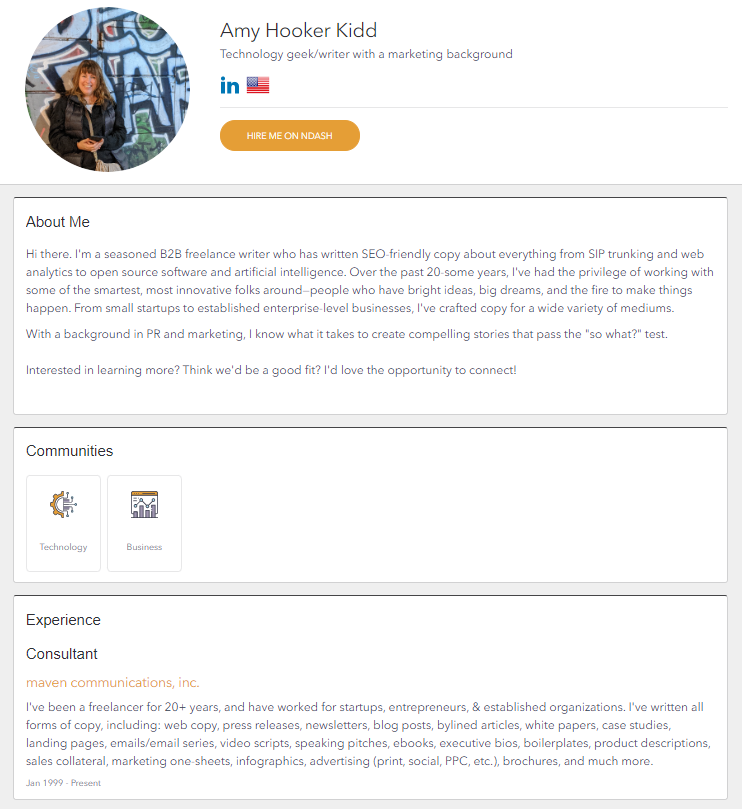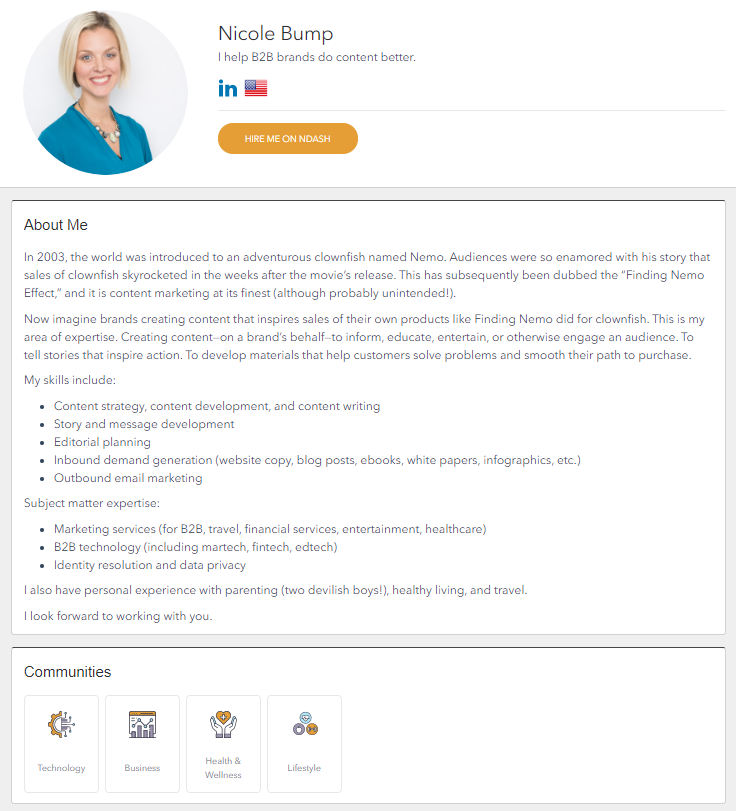When sending out pitches or responding to ads, there’s one thing they all have in common – requests for a writer’s portfolio. If you don’t have one, you might cull together samples from your hard drive as a stand-in. While that might work if you’re pitching to a niche industry and want specific topic samples, this strategy can become cumbersome over time.
The solution? The simple answer – creating an online writer’s portfolio.
Okay, that seems easy enough for some – but it isn’t uncommon for others to have dozens of questions. Like, how much information should it include? How should my portfolio look? Should I add every single clip I’ve ever written? These are all excellent questions, and this post digs into those details and more.
What is a Writing Portfolio?
A writing portfolio is a collection of a freelancer’s best writing clips. It’s an excellent marketing tool showing a writer’s credentials alongside a solid body of work. Portfolios show off a writer’s skills and help them “make their case” when pitching to prospective clients. Some writers like showcasing their portfolio on a professionally designed website, while others prefer using third-party platforms like nDash, for example.
Why a Portfolio Matters to Content Marketing Managers
For content marketing managers, a writer’s portfolio is more than just a collection of writing samples. It’s a window into your capabilities as a content marketing partner. Here’s what they’re looking for:
- A perfect match: Your portfolio should demonstrate your understanding of the specific content marketing needs of their industry or niche.
- Content marketing savvy: Do you understand SEO best practices and content marketing strategies that drive results?
- Content format expertise: Can you craft compelling content across various formats, like blog posts, case studies, white papers, and social media content?
What Content Should a Writer’s Portfolio Contain?
While it’s tempting to only include writing samples in a freelance writing portfolio, they must contain much more than that. Use this space to include a biography, client testimonials, a call to action, and social media links. Here are some additional details about this and suggestions for what you should and should not include in your portfolio.
What to include
- Biography: Your writer’s biography should be complete but not too salesy. If it’s too promotional, it will send the wrong message.
- Call to action: Weave calls to action that include your contact information naturally through your portfolio.
- Client testimonials: If you receive recommendations from previous clients, include quotes from those along with other testimonials.
- Social media links: Potential clients want to see where you are, how you present yourself online, additional background information, and more – much of which they can find on your social media channels.
- Writing samples: Go back at least two years and highlight your best writing work within that timeframe. Organize your writing samples by niche using tags, titles, or other organizational strategies.
- Metrics and results: Include metrics such as engagement rates, conversion rates, and traffic growth to showcase the impact of your writing.
- Industry-specific portfolios: Tailor your portfolio to specific industries (e.g., tech, healthcare, finance) to show alignment with brand niches.
- Versatility and specialization: Balance showcasing your versatility by highlighting specialization in key areas to appeal to a broader range of brands.
What not to include
- Avoid linking to content that isn’t your best work or work that’s too outdated.
- If you’re trying to develop a niche audience, avoid linking to everything you’ve ever written – otherwise, you’re showcasing yourself as a “generalist.”
- Short-form content isn’t the best example when you want to showcase your experience as a long-form content writer.
How to Build Writing Samples for Freelance Writing Portfolios
While posts to your website’s blog serve as a good starting point for building writing samples for your portfolio, there’s more to it than that. Potential clients like seeing a body of work from a variety of sources. If you’re new to the industry, it might seem impossible to put a portfolio together to attract clients if you don’t have any yet.
Here are some tips for building samples for your freelance writing portfolio:
- Guest posting: Look for guest posting opportunities on blogs within your niche or interest
- Post on Medium: Look for publications seeking submissions on Medium aligning with your background, interests, or niche (Keep in mind, though, that your portfolio should not contain only posts from Medium)
- Spec writing: If you have specific assets that you’d like samples for, create them as “spec pieces” to showcase on your site. For example, if you want to offer case studies, create one to use as a sample.
Examples of nDash Writer Portfolios
At nDash, we have many examples of what writer’s portfolios should look like – they include brief biographies, experience, topics, rates, writing samples, recommendations, and content available for sale. Here are several examples:
nDash Writer’s Portfolio Example: Amy Hooker Kidd

nDash Writer’s Portfolio Example: Jess Shanahan

nDash Writer’s Portfolio Example: Nicole Bump

Click here to set up your nDash writer’s portfolio today.
FAQs about a Writer’s Portfolio
What should be included in a writing portfolio?
What you include in your portfolio is your decision, but it should ultimately contain samples of your best work. If you don’t have samples, create spec pieces aligning with the services you offer. For example, if you offer whitepapers, create one showcasing that skill.
How do I make a writer’s portfolio with no experience?
Start developing your portfolio by creating a blog on your website and keeping it up to date. Then, look for guest posting opportunities on other blogs. Mix things up a little by adding one or two Medium publications.
How long should a writer’s portfolio be?
New portfolios should contain at least three writing samples. As you collect more, feature your highest-quality work. Instead of featuring an exhaustive list of everything you write, organize your clips by topic or niche for easy scanning.
Is a writer’s portfolio the same as a resume?
No, a writing portfolio isn’t a resume. Think of a portfolio as a place to showcase your writing skills while a resume summarizes your background.
Ready to join us on nDash and kickstart your freelance writing career?
Start building your profile now.
Editor’s note:
- Updated examples and images on 12/8/2022.
- Updated content on 5/28/2024.
